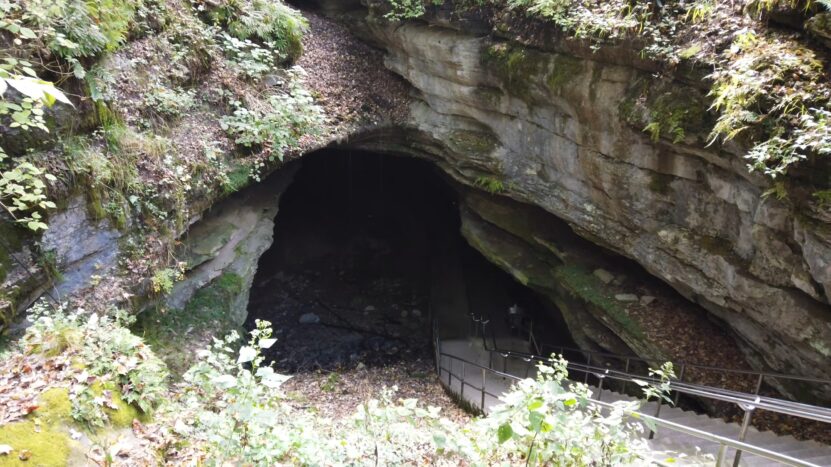Mammoth Cave National Park, located in Kentucky, is home to the world’s longest-known cave system. With more than 400 miles of explored passageways, this awe-inspiring natural wonder holds a wealth of interesting facts and historical significance.
The story of Mammoth Cave began millions of years ago, as its intricate network of chambers, tunnels, and underground rivers was slowly carved out by water and geological processes.
Over time, these subterranean passageways became a treasure trove of scientific discovery, revealing clues about the Earth’s past and the creatures that once inhabited it.
Some Basic Facts
- Location: Kentucky
- Acreage: Today, Mammoth Cave National Park (the park) comprises approximately 52,830 acres in Edmonson, Hart, and Barren counties in the Commonwealth of Kentucky.
- Visitation: Over 2 million people a year visit the park and more than 500,000 of them take a cave tour.
- Highest Surface Elevation: 852 feet (260 meters) Brooks Knob.
- Lowest Surface Elevation: 411 feet (125 meters) Green River near Brownsville.
- Climate: Mammoth Cave National Park has a moderate climate, with often warm and humid conditions. Summers are very warm, and winters are cool but not usually cold. Southern Kentucky receives the highest average precipitation for the state, about 50 inches a year.
In this article, we will delve into the fascinating history of Mammoth Cave, exploring its geological formations, human interactions, and the role it has played in shaping our understanding of the natural world.
Let’s Begin
1. National Park Status
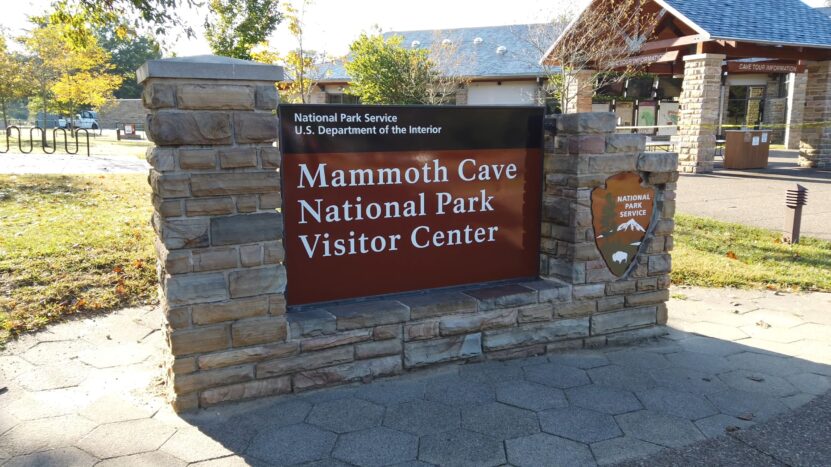
It was designated a National Park in 1926, but it was not until 1941 that the park was officially established and opened to the public.
This gap between designation and establishment can be attributed to the time needed to acquire the necessary land and resources to protect and manage the park.
The establishment of Mammoth Cave National Park helped ensure the preservation of its unique geological features and rich history, making it accessible for generations of visitors to explore and appreciate.
2. Tourist Attraction
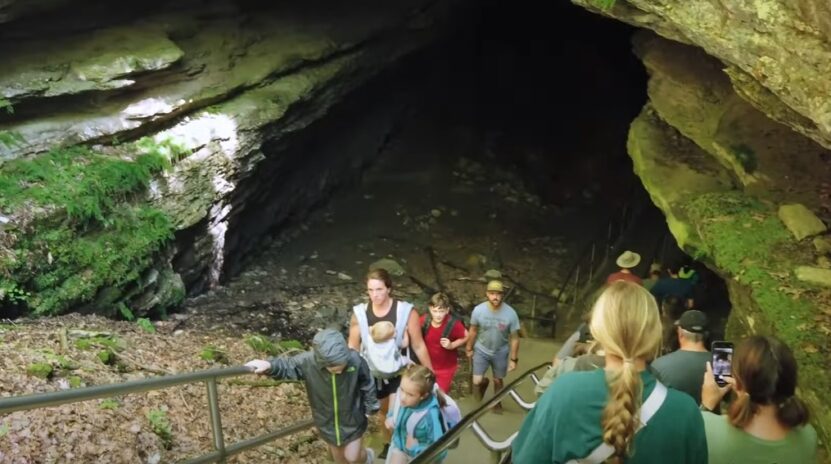
Flatt’s Cave, now known as a part of the Mammoth Cave system, began attracting tourists as early as 1810, making it one of America’s first-ever tourist attractions.
This early interest in the cave showcases the nation’s fascination with natural wonders and the growing importance of leisure travel in the early 19th century.
The captivating beauty and mystery of Flatt’s Cave drew visitors from near and far, laying the foundation for the eventual establishment of Mammoth Cave National Park and the promotion of cave exploration and conservation across the United States.
3. UNESCO
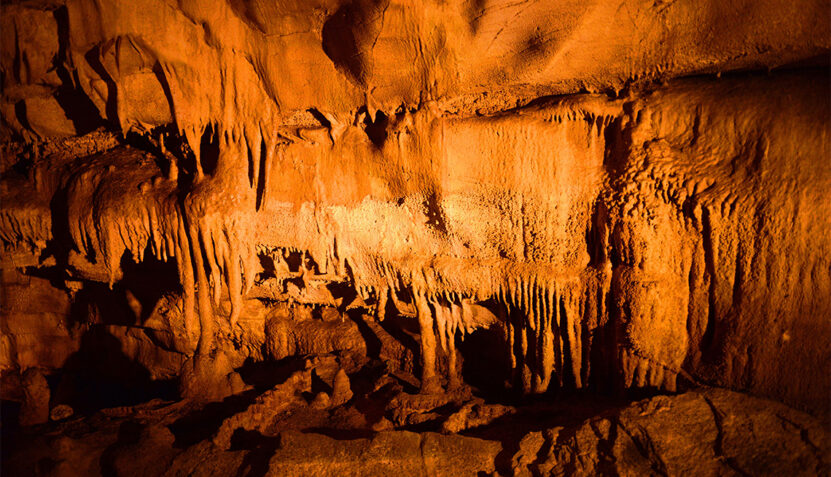
National Park received significant international recognition when it was listed on the UNESCO register of World Heritage Sites in 1981.
This prestigious designation highlights the park’s exceptional natural beauty, geological features, and historical importance.
Furthermore, in 1990, Mammoth Cave was named an International Biosphere Reserve, acknowledging its vital role in preserving biodiversity and promoting sustainable development.
These notable designations underscore the global significance not only as a geological marvel but also as a site of immense ecological and cultural value.
The park’s ongoing commitment to conservation and environmental stewardship serves as a model for other protected areas worldwide, ensuring the preservation of this extraordinary natural wonder for future generations.
4. Archeological Evidence
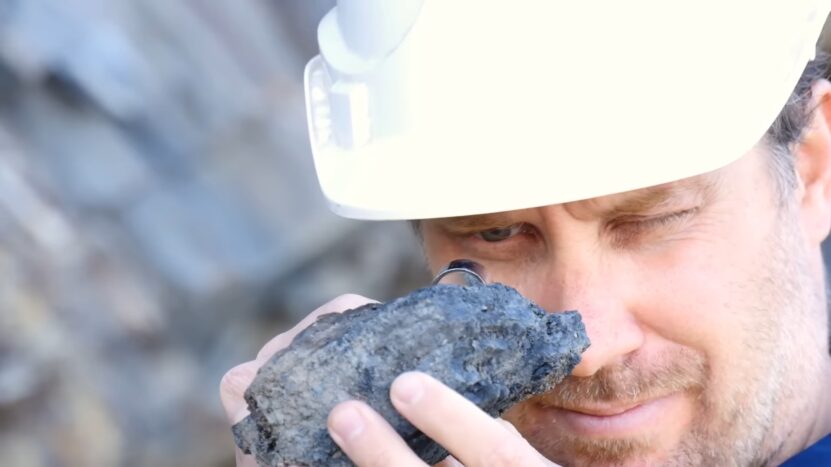
They demonstrate that aboriginal peoples started exploring the Mammoth Cave system more than four thousand years ago.
These early inhabitants ventured into the caves to collect resources such as crystals and salts, which were valuable for various purposes, including trade and ceremonial uses.
The artifacts and remnants discovered within the caves, such as torches, pottery, and mummified remains, provide invaluable insights into the lives, culture, and beliefs of these ancient people.
This extensive history of human interaction with the Mammoth Cave system highlights the longstanding connection between humans and the natural world, as well as the enduring allure of these captivating underground landscapes.
The ongoing study of archeological finds within the cave system continues to enhance our understanding of the rich cultural heritage associated with Mammoth Cave National Park.
5. Mammoth Cavern Cabins
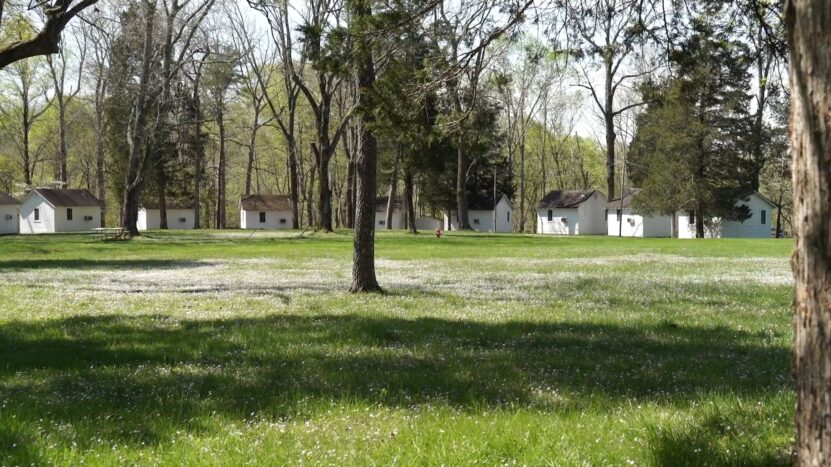
This is not only home to the world’s longest-known cave system but also features historic cabins dating back to the early nineteenth century.
These charming structures still stand today, offering visitors the opportunity to immerse themselves in the area’s rich history while enjoying a truly quaint and unique lodging experience.
Built by early settlers and entrepreneurs who recognized the potential for tourism in the region, these cabins served as accommodations for travelers eager to explore the natural wonders of the cave system.
Painstakingly preserved and restored, these historic cabins provide a glimpse into the past, allowing guests to connect with the region’s heritage while enjoying modern comforts.
Staying in one of these cabins enhances the visitor experience at Mammoth Cave National Park, providing an authentic and memorable connection to the park’s history and the enduring legacy of cave exploration and tourism in the area.
6. Formation
The formation of Mammoth Cave began over two hundred eighty million years ago when geological processes set the stage for the creation of this immense subterranean network.
During this time, the Earth’s surface underwent significant changes, with tectonic forces causing the land to rise, twist, and buckle.
These movements resulted in fractures in the limestone and sandstone layers, providing pathways for water to seep in and initiate the process of erosion.
As water percolated through the cracks and interacted with the rock, it gradually dissolved and eroded the limestone, creating hollow spaces within the stone.
Over millions of years, these spaces expanded, eventually forming the vast system of chambers, passageways, and underground rivers that comprise Mammoth Cave today.
The ongoing study of Mammoth Cave’s geological formation provides valuable insights into the complex processes that shaped not only this remarkable cave system but also the broader landscape of the region.
Researchers continue to explore and map new passages within the cave, uncovering hidden chambers and features that further enhance our understanding of the intricate relationship between geology, hydrology, and time.
7. Lost River Cave
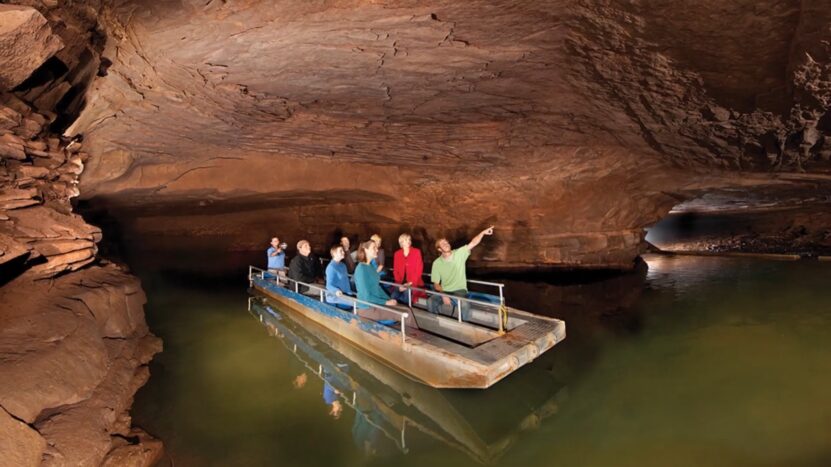
Lost River Cave, located in Bowling Green, Kentucky, is a remarkable natural attraction offering visitors a unique underground boat tour experience.
This extraordinary cave system features one of the largest cave openings in the world, drawing guests from far and wide to explore its enchanting subterranean landscape.
The immense cave opening provided shelter for Native Americans as early as eight thousand years ago.
Archeological evidence found within the cave system, such as tools, pottery, and remnants of ancient campfires, attests to the long-standing human connection with Lost River Cave.
This prehistoric occupation highlights the importance of caves as vital natural resources and safe havens for early inhabitants in the region.
Today, Lost River Cave offers visitors a chance to journey through time and immerse themselves in the fascinating history, geology, and ecology of this captivating underground environment.
The boat tour provides a memorable and accessible way for guests to explore the cave’s hidden wonders, learn about the ancient Native American inhabitants, and appreciate the cave’s ongoing role in supporting a unique and diverse ecosystem.
FAQs
Is Mammoth Cave a 7 Wonder of The World?
It is not officially recognized as one of the Seven Wonders of the World, which traditionally refers to the list of the most remarkable and famous ancient structures or monuments.
However, Mammoth Cave is undoubtedly a wonder in its own right due to its immense size, geological features, rich history, and biological significance.
As the world’s longest known cave system, with more than 400 miles of explored passageways, it stands as an exceptional natural marvel that captivates visitors from around the globe.
What Mummy Was Found in Mammoth Cave?
The most famous mummy discovered is that of an early Native American referred to as “Lost John.” Lost John, believed to be a member of the indigenous Mississippian culture, lived approximately 1,000 years ago. His mummified remains were discovered in 1935 in a remote section of the cave.
The body was remarkably well-preserved, thanks to the constant temperature and humidity within the cave.
Lost John was found with a handful of artifacts, including a shell pendant and a woven fabric around his waist, which provide valuable insights into the culture and customs of the people who lived in the region at that time.
Who Lived Inside the Cave?
In more recent history, Mammoth Cave served as a dwelling for enslaved African Americans who were involved in mining saltpeter during the War of 1812. Saltpeter, a key ingredient in the production of gunpowder, was in high demand, and the cave’s rich deposits made it an important site for extraction.
The enslaved workers lived and labored within the cave, enduring harsh conditions as they mined the valuable resource.
What Are 4 Random Facts About Mammoth Cave?
- World’s Longest Cave System
- Unique Ecosystem
- Prehistoric Inhabitants
- Saltpeter Mining
Final Words
Visitors to Mammoth Cave National Park are treated to awe-inspiring views of nature’s incredible underground wonders. With over 400 miles of explored passageways, the vast cave system offers a multitude of breathtaking sights and unique geological formations that cannot be fully appreciated in just one day.
To make the most of their experience, you should book a room at one of the nearby Mammoth Cave hotels, bring a camera, and plan an extended stay to fully explore the park’s many offerings.
If you find this article useful, and you are interested in discovering more about different travel destinations, check out our other posts for more information and inspiration:

